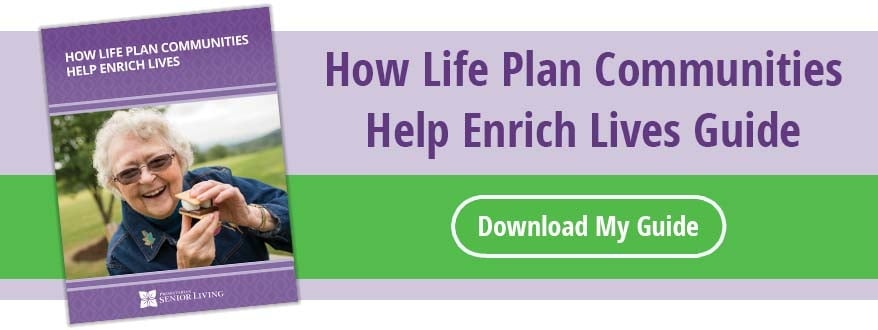
Navigating Our Nation's Changing Senior Healthcare Landscape
Updated from the original publication on July 22, 2021.
You read it in the newspapers every day – the cost of healthcare is rising, the system is harder to understand and navigate, and patients are not getting the benefit for all of the money our healthcare system costs the country. And, if you have chronic illnesses such as high blood pressure, diabetes, high cholesterol, COPD or congestive heart failure, chances are you’ve experienced significant confusion and conflicting information as you navigate the system.
It’s not a new issue, just one that’s been viewed through the lens of treating illness, rather than encouraging integration and shared goals with a view on education, prevention and understanding what wellness means to the consumer in each phase of life.
A different view that focuses on piecing together different parts of the healthcare system so that the gaps in care become more evident has been more of a focus in recent years. Called by many names like population health, value-based care, and coordinated care, these models all focus on helping people make sense of their healthcare and navigating the silos of services.
At Presbyterian Senior Living, we’ve been focused on this lens of coordination and integration of care and wellness for many years, recognizing that those we serve often have some of the most pressing needs. This focus spans all of our services and is carried out in different ways to meet our consumer’s needs.
For instance, in affordable housing, we’ve been a leader in integrating experts who can assist with navigating the gaps in the healthcare system. In 2012, we partnered with a health system to provide specialists that bridged the communication between the hospital, housing location, pharmacy, primary care physician and other follow-up services to ensure lapses in access to care didn’t cause unnecessary hospitalization.
These specialists help residents understand doctor’s orders, ensure residents have access to transportation to get them to follow-up visits, evaluate medication conflicts and help healthcare providers understand the patient more completely to ensure high quality care.
A great example of how these low-cost interventions can bridge gaps in care is a recent case of Mr. Smith, a resident of a community that has introduced clinical specialists. He was in the hospital for several days and upon coming home was very confused and overwhelmed with the changes as a result of a new diagnosis.
This included new medication orders and a note on the discharge summary to “take this prescription to the pharmacy.” He saw his family doctor a few weeks later and on the paperwork from that appointment, regarding his new medication, it stated “resident has not started taking yet.”
When the clinical specialist asked him why he had not started taking it, he said “I have no way to get to the pharmacy.” The specialist promptly faxed his prescription to the pharmacy to get it filled, and arranged an aide to pick up the medication that day.
She also found that the medication list from hospital and family doctor were different, so she confirmed the correct medications and helped the resident organize them. Two weeks later when the resident had an outpatient procedure at the hospital, he did not take a current medication list, so the hospital referred to an older list which contained an incorrect dose of insulin. Upon return home, our clinical specialist met with the resident and caught the medication error which, had she not, would have caused serious complications and possible hospitalization.
Two weeks later when the resident had an outpatient procedure at the hospital, he did not take a current medication list, so the hospital referred to an older list which contained an incorrect dose of insulin. Upon return home, our clinical specialist met with the resident and caught the medication error which, had she not, would have caused serious complications and possible hospitalization.
This is one example that many patients and caregivers can relate to as it happens quite frequently. Despite advances in technology to assist with communication, this example highlights the importance of communication and collaboration to ensure quality outcomes.
Presbyterian Senior Living is actively working to ensure this communication and collaboration happens in other areas as well.
In our Transitional Care areas, we have specially trained Transitional Care nurses whose main goal is to coordinate not only a successful transition from the hospital to our short-term rehabilitation or nursing services, but to also ensure a successful return home.
That means placing a high priority on understanding what goals our patients have, what support is available in the home, and what barriers need to be examined to complete a successful stay with us.
The other critical factor is coordinating follow-up visits with the family doctor and working with home health agencies in each community we serve to ensure the services are in place to prevent rehospitalization and achieve each individual’s Path to Possible.
What is Path to Possible? It is the focus Presbyterian Senior Living has on ensuring your Transitional Care stay makes it possible for you to return successfully to the activities in life that were meaningful to you prior to hospitalization.
Population health also focuses on ensuring people have the tools they need to achieve the level of well-being they want in each stage of life.
In today’s world of immediate access to any information we want on the internet, it’s even more important to have trusted advisors and tools to help make sense of often conflicting information.
Through our integrated wellness programs, we start by helping consumers assess their current level of wellness and their desired state, and then provide programs and services to help individuals achieve those goals.
Personal trainers, nutritional counseling, and wellness centers are just a few of the services that residents rely on to develop their own suite of services to meet their needs.
Each of these programs Presbyterian Senior Living has developed is intended to truly focus on educating and inspiring consumers and providing access to the experts they need to truly achieve their health outcomes.
Each day we are continuing to work on even better ways to improve health with enhanced technology, health coaching and other programs which continue to focus our lens on prevention through better coordination. For more information on how a Continuing Care Retirement Community can help enrich your life, download our free eBook today!
About Diane Burfeindt
Diane Burfeindt is the Senior Vice President of Strategy and Innovation at PSL. Ms. Burfeindt has over 28 years of experience in healthcare and aging services and has been employed by PSL since 1997. Prior to serving as Senior Vice President Strategy and Innovation, she held the positions of Vice President Population Health, Vice President of Residential and Community Services, Corporate Director and Executive Director. Throughout her career, she has worked with acute care, housing, home care, continuing care retirement communities, personal care/assisted living, and skilled nursing. In her current position, she is responsible for PSL’s innovation and strategic planning processes. Ms. Burfeindt received her MBA from Bloomsburg University and a Bachelor’s degree in Communications and Journalism from Shippensburg University. She has been involved in various volunteer leadership positions including the National Investment Council Planning Committee, Secretary of the LeadingAge PA Board of Directors, LeadingAge PA Fellows in Leadership Coach, and is a Larry Minnix Leadership Academy Fellow. She is a licensed nursing home administrator and previously served as a surveyor for CARF/CCAC. She is a frequent presenter at state and national conferences on best practices in the industry.



